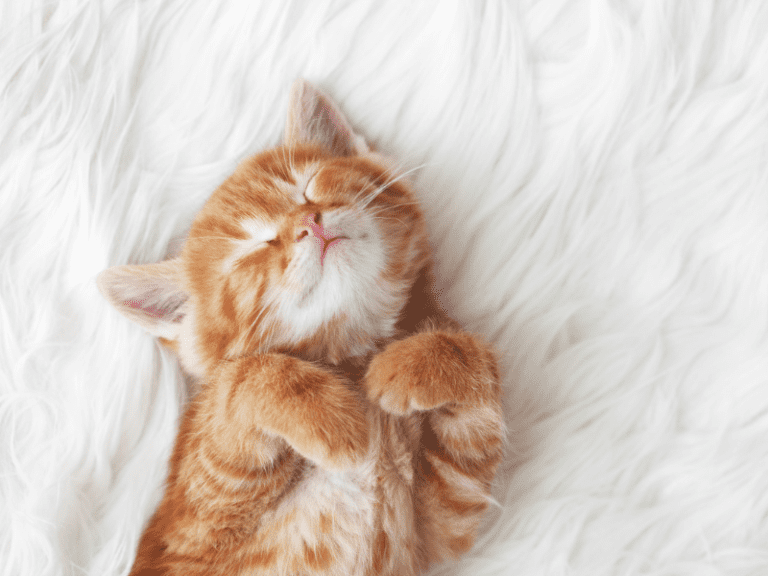Unleashing the Power of Cats: How They Help Make a Difference
FULL DISCLOSURE: The links I share in this course ARE my affiliate links. This means I earn a commission, at no extra cost to you. In fact, sometimes you’ll get a discount or free credits just FOR using my link. 🙂
Service cats are a special type of therapy animal that provides assistance to individuals with physical, mental, or emotional disabilities. Like service dogs, service cats are trained to help with a variety of tasks, from providing companionship to helping with everyday tasks.
In this article, we'll explore the history of service cats, their benefits, different types of service cats, and how to find and train a service cat.
What are service cats?
A service cat is an animal that has been specially trained to assist a person with a disability. Service cats are not pets, but rather working animals that help improve the lives of their owners.
The history of service cats
The use of service animals dates back to the early 1900s, when they were used to help those with vision impairments. Since then, the use of service animals has expanded to include animals that can help those with a variety of physical, mental, and emotional disabilities.
The use of service cats specifically has become more popular in recent years. In fact, the American Kennel Club (AKC) recently added the title of “Service Cat” to its list of recognized titles for cats. This has helped to raise awareness of service cats and their potential to help those with disabilities.
Benefits of having a service cat

Having a service cat can provide a variety of benefits to individuals with disabilities. They can provide physical assistance with everyday tasks, such as carrying items, opening doors, and retrieving dropped items. They can also provide emotional support and companionship, which can be especially beneficial for those who are isolated.
Additionally, having a service cat can provide a sense of security and independence. Service cats are trained to recognize danger and alert their owners if something is amiss. They can also provide a sense of companionship and comfort, which can help those with disabilities feel less alone.
Service cats in the workplace
Service cats can also be beneficial in the workplace. They can help those with disabilities feel more confident and secure in their work environment. They can provide emotional support during stressful times and alert their owners if something is amiss. Additionally, they can help those with disabilities complete tasks that they may otherwise not be able to do.
Many employers are now allowing service cats in the workplace. This can help to create a more inclusive and supportive environment for those with disabilities. It can also help to reduce the stigma surrounding those with disabilities, as it shows that their needs are being taken into consideration.
Different types of service cats
There are a variety of different types of service cats. Some cats are specially bred for their service abilities, while others are adopted from shelters or rescue organizations. The type of service cat you choose will depend on your individual needs and the type of tasks you need the cat to perform.
Some of the most common types of service cats include:
- Assistance cats, trained to perform specific tasks for individuals with physical disabilities, such as pulling wheelchairs or assisting with mobility.
- Emotional support cats, trained to provide comfort and emotional support for individuals with mental health conditions, such as anxiety or depression.
- Therapy cats, trained to visit hospitals, nursing homes, and other facilities to provide comfort and support to patients and residents.
- Seizure response cats, trained to alert individuals with epilepsy or other seizure disorders of an oncoming seizure, or to perform specific tasks during or after a seizure.
- Autism support cats, trained to assist individuals with autism by providing comfort and promoting social interaction. Each type of service cat is trained to perform specific tasks to meet the needs of the individual they are serving.
Training a service cat

Training a service cat requires patience, consistency, and a positive reinforcement approach. The first step is to identify the specific tasks the cat will be trained to perform, such as retrieving objects or providing comfort during panic attacks.
Next, positive reinforcement techniques, such as treats or praise, can be used to teach the desired behavior. It is important to start with simple tasks and gradually increase the difficulty as the cat becomes more comfortable and confident.
Consistency is key in reinforcing the desired behavior and preventing the cat from developing negative habits. Regular training sessions and reinforcement of good behavior can help the cat continue to develop new skills and become a well-rounded service cat.
It may also be beneficial to consult a professional animal behaviorist or service animal trainer for guidance and support in the training process.
The cost of owning a service cat
The cost of owning a service cat can vary depending on the type of cat you choose and the amount of training it needs. Generally speaking, budgeting for food, vet bills, and other supplies is important. Additionally, if the cat needs to be professionally trained, you should also budget for that.
How to find a service cat

If you are interested in getting a service cat, there are a few ways to find one. You can adopt a cat from a shelter or rescue organization, or you can purchase a specially bred cat from a breeder. It is important to do your research before making a decision, as not all cats are suitable for service work.
You can also work with an organization that specializes in training service cats. These organizations can help you find the right cat for your needs and provide guidance on training it.
Laws and regulations surrounding service cats
There are a variety of laws and regulations surrounding service cats. It is important to familiarize yourself with these laws to ensure that you are in compliance. Some of the most common laws and regulations include:
- Service cats must be trained to behave appropriately in public places.
- Service cats must be kept on a leash or harness when in public.
- Service cats must have a tag or other form of identification.
- Service cats must be vaccinated and spayed/neutered.
The Power of Cats: Enhancing Lives Through Assistance and Emotional Support
In conclusion, service cats can be life-changing companions for individuals with disabilities or mental health conditions. With proper training and patience, they can provide practical and emotional support, positively impacting the individual's quality of life.
Whether you're looking to train your own service cat or you're considering getting one, remember that these furry friends are here to help and bring joy to your life.
So, let's celebrate the amazing bond between humans and cats, and the incredible impact they can have on our lives. Woohoo!







